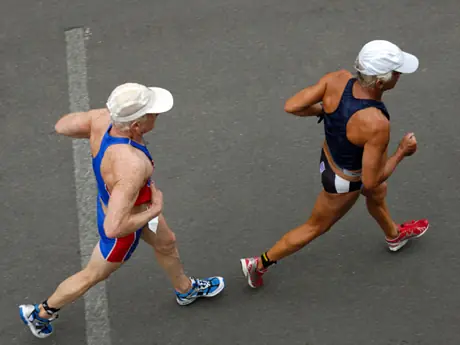In addition to higher intensity aerobic work, like intervals and tempo runs, coaches credit strength training with helping magnify after-burn. Runners are often most comfortable with body-weight exercises, like lunges, push-ups and core work because they can be done quickly and efficiently at home post-run. "I recommend including strength training with high intensity movements to get both the benefit of eliciting a higher EPOC and increased muscle mass," adds Koegel.
By implementing the right kind of body-weight exercises 2 to 3 times a week, runners will boost after-burn without adding too much bulk. This type of work hits two birds with one stone because it can also help runners avoid common running injuries that result from muscle weakness and overcompensation.
More: How to Find Your Weaknesses as a Runner and Avoid Injury
Why When You Eat Is so Important
Diet can contribute to increasing the after-burn effect. Consuming calories before the workout, like a banana or yogurt, can allow you to work harder. A snack of protein and carbs consumed within 30 minutes of finishing a workout also plays a role. More specifically, a ratio of protein to carbs of 1:3 to 1:4 is ideal. A peanut butter and jelly sandwich on whole-wheat bread or a protein shake with fruit are both great options.
More: Post-Workout Fuel You Need
"If you eat foods that help you work harder during exercise, you will elicit a better response in EPOC because it will take more energy to return to a resting state," explains Koegel. "Consuming the right ratio of protein to carbs post workout will help the body return amino acids to the muscles, and will also slightly increase the metabolism post workout."
More: How to Increase Metabolism During Marathon Training
Calorie-Burning Running Workouts
Consider the following running and strength workouts. Be sure to take at least one easy day of running between these workouts, and try to implement strength training 2 to 3 times each week on those easy days.
- 2
- of
- 4
About the Author

Get ACTIVE on the Go


Couch to 5K®
The best way to get new runners off the couch and across the finish line of their first 5K.
Available for iOS | Android







Discuss This Article